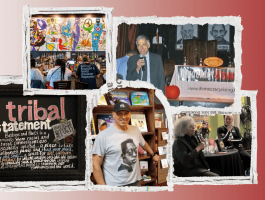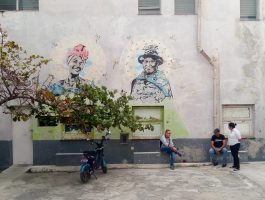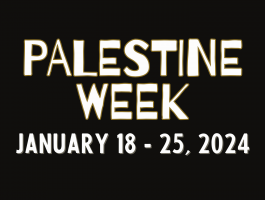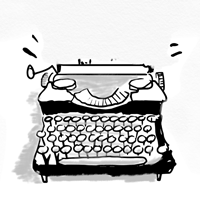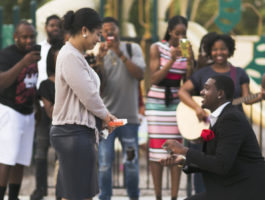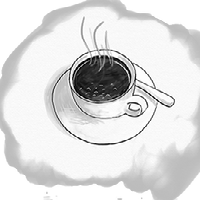August 14, 2012 | Published in Alternet
The following excerpt is adapted from Rebecca Walker’s introduction to the Black Cool: One Thousand Streams of Blackness [4](Counterpoint, 2012) which she edited, and Dayo Olopade’s chapter from the book, “The Hipster.”
“Black Cool .. is made up of elements that can be traced back to a place, a people, and a culture, elements brilliant writers take on in this book. In [this book Black Cool], Michaela angela Davis says Black people own this cool, and should not give it up for pennies on the dollar. I say Black Cool can be shared, but its genus cannot be forgotten, cannot be erased again. Can Black Cool be tried on, adapted, assimilated, co-opted? Yes. Can its birthplace be denied? Only by those invested in gratuitous erasure.”—Rebecca Walker
The Hipster by Dayo Olopade
Mali in the 1960s was a hip place. It should not have been so: Bamako, the capital, anchors a landlocked wedge of West African desert and grass. Yet the country’s unusually young, urban population spent the first decade of Mali’s freedom from French colonial rule smoking Marlboros and drinking locally brewed Castle lagers, doing the eyebrow-raising things that hipsters do. A decade later, a dysfunctional, militarized government would force a sudden good-bye to all that, but for the boom years, Bamako boomed, and a young photographer named Malick Sidibé took its pulse.
Sidibé’s open-air works freeze Black bodies on white nights, dancing, clapping, sweating, and chasing smoke rings in flight. His studio portraiture distills this exuberance into pure pulp. In one photo, Fou de Disque, a young man vamps in profile, his face hidden by the lapel of his period-perfect trench coat. His Afro is lean, but a halo of vinyl records pasted on the wall behind him recalls a Medusan tousle of hair. Another black-and-white, Yeye, depicts a teen with an impossibly slim waist easing into a pose that the differently proportioned Fat Joe would popularize with the 2004 single “Lean Back.” In Malian bogolan prints, Elton John sunglasses, and fey disco pants, the kids are cool without dispute. Their outfits are just outfits. The fun is really fun.
Contrast the purity of the Malians’ self-regard with the tortured and performative notions of the hipster in contemporary America. The traits are as obvious as a neck tattoo:
Hipsters are urban, privileged, attitudinally earnest, and functionally alternative. They live life at the intersection of Pabst Blue Ribbon and Day-Glo leggings—worn with irony, or maybe not. The prototype listens to indie darlings like Pavement, or anthem rock like Arcade Fire. Maybe even a little Wu-Tang.Everything obscure is good: homemade pickles, a headband on some longhair of a man, a waifish girl sporting several thick gold chains. And, for the most part, the hipster is white.
Of course, the origins of the word, as Mark Greif takes care to point out in the collection of essays on hipsterism produced by n+1 magazine, are Black. Norman Mailer parsed “The White Negro” in a 1954 issue of Dissent magazine: Indeed if one is to be a man, almost any kind of unconventional action often takes disproportionate courage.
So it is no accident that the source of Hip is the Negro, for he has been living on the margin between totalitarianism and democracy for two centuries.
James Baldwin famously scolded Mailer for his fetishization of Black cool. But, in a sense, Mailer was right: The hipster will always be defined in opposition to majority culture. For the white hipster—torn between ironic, “who cares if I’m wearing a tracksuit” detachment and the exhibitionism required to perform the trend—such opposition requires effort.
The explosive outer edges of American punk culture today have been colonized by Mexicans, some of whose very presence in the United States is transgressive. By contrast, white, urban twentysomethings bought (into) the physical trappings of hipsterism out of necessity. It’s the curse, perhaps, of majority culture. Lacking both social outsidership and whatever traces of melanin that would brand one as truly outré, young white Americans are forced to perform any distinctions with aggressively curated eclecticism. John Leland calls this “Caucasian kitsch.”
This explains the iterations of white hipsterism in the 1990s and 2000s: bike-breaking mechanical collectives in Austin, Texas; Dumpster-diving vegan brunches in Brooklyn, New York; alternative-rock bands from Baltimore, Maryland, who perform in animal attire. According to Greif, the burgeoning, irony-obsessed white subculture donned trucker hats yet shunned SUVs, and wore pants tight enough to cloud traditional ideas of identity and sexuality. Even the protesters who flooded the Seattle G8 summit with crocodile tears began to register their distaste at the level of consumption. As the George W. Bush years wore on, this physically manifested political difference was the point.
As hipsterism migrated from Black to white, it likewise evolved from a state of cool to something you can buy. Describing the relentless march of gentrification in the Lower East Side of Manhattan, Greif takes pains to point this out: “If the hipster then spent $1,000 on clothes, or a painted skateboard, or Johnnie Walker Blue Label—it seemed like rebellion.”
White-hipster disillusion thrives in equal measure on church-sale vintage T-shirts and on apps downloaded to Apple’s iPhone. As a result, today’s hipster is splashier and less Western. Kids in Croatia and Dubai wear bright sneakers and graphic hoodies that they have purchased in stores promising that version of the American dream. Pure consumption offers entry into what has drifted from Black cool to white hype.
In a strange convergence during the same swath of the late nineties and early ’00s, Black style also became about performative consumption. In 1999—the same year as the anti-G8 “Battle in Seattle”—Hype Williams filmed a portrait of the Magnolia Housing Projects in New Orleans. It was a music video for Juvenile’s hit song “Ha.” There’s a gritty charm to the dancing, as joyful as 1960s Mali. As the pseudodocumentary footage suggests, the grind is real—but bling is king. About three minutes into the video, you can see a child version of rapper Lil Wayne, who grew up at Magnolia. He, like the star of the video, is gleefully waggling a golden chain.
This iteration of Black American cool offered a type of social solidarity (who doesn’t remember sweating FUBU’s apparel and Blackronym, “for us by us”?). But for the most part, fashion choices reflected an ethics of consumption geared not at opposition but at mainstreaming—melding Black difference with majority mores (Tommy Hilfiger in size XXL, please). Though hipsterism is the heritage of Black American cities, the generation reared on Nautica and K-Swiss forged an association with whiteness that left Black hipsters on the outskirts of Black cool. In the 2009 film Medicine for Melancholy, two such characters amble around the bleachening city of San Francisco. One principal, Micah (played by Daily Show correspondent Wyatt Cenac), laments, “Everything about being indie is tied to not being Black.”
Micah means that the trappings of “Caucasian kitsch” that populate his everyday require mental dissociation from Blackness. For the racially alternative hipster, any act of selfexpression is necessarily hurling itself against an entrenched, if recent, narrative about what it is to be Black.
I have always considered myself a hipster, or one for as long as I’ve known the term. I’m a Nigerian American cosmopolite with a soft spot for LCD Soundsystem and vintage boots. I was the first and only Black editor in chief of the Yale Literary Magazine, the sort of game that feeds the sort of game that is n+1. For four birthdays running I served up PBR and jerk chicken, to all comers. I enjoy Wu-Tang tracks but feel greater affection for the seventies soul samples that scaffold their best work. Is this lonely? Perhaps.
But I’d argue that the in-between-ness and subversion Micah bemoans are actually an asset. Today’s Black cool is a smart-alecky evolution of the carelessness in 1960s Mali. In September 2011, the New York Times published a thorough examination of evolving Black style, anchored by two young men with a passion for refined streetwear (think tweed, and pocket squares made from kente cloth). “I used to wear size 42 jeans,” one modern dandy told the reporter. “Coming from that to a tie and shirt, people perceive you in a whole different way.”
The surprise is the point. Their blog, Street Etiquette, doesn’t wholly abandon the brands of nineties Black style. The hood-zuberance of “Ha” remains—but the Polo sweaters fit. This version of Black cool is defined by fusion, hacking, and recycling—especially white revisions of an originally Black attitude. Ask Andre 3000 in pearls: It is a performance of a performance.
Who knows this best? The kids in cities from Detroit to Dallas to Washington, D.C., mixing white-boy silhouettes, postpunk swagger, and Elvis Costello eyeglass frames. Take the young Black men who comprise the New Boyz—a California band that has recorded a series of YouTube videos designed to teach their signature dance—the “jerk.” The boys are wearing electric-colored T-shirts and pin-thin trousers in contrasting neon hues. One is wearing several silver necklaces and a fedora. The knee-popping, stylized locking that characterizes “jerking” has spread from coast to coast—junior high school students in New York City have picked up on the lo-fi West Coast rhythms of the New Boyz. Responding to concerns that “jerking” came from “gang” culture, a precocious ten-year-old told a reporter, “We changed it and made it something positive and new. We made it ours.”
This child represents what I’ll call the “kick, push” generation—obsessed with skateboarding, sure, but also with the radical re-curation and re-creation of diverse foundational myths and touchstones. In Washington, D.C., where I lived for years, you can see Black kids skating alongside white kids, whom they outnumber, despite living in a city where the Black population has declined from three-fourths to just over half. The real question, then: Who is gentrifying whom?
Let’s return to Sidibé. We start with the external. The fashions are visible. There is something in the glass, something on the radio. Yet the subjects of his work suggest that it does not matter what is in the glass, or who is on the radio. The subversion is immaterial. These Africans are not warring and dying and emigrating. They’re dancing. Their hipsterism is, finally, about attitude, born of an understanding that they are spectacular. In one of Sidibé’s later photographs, of teenagers peering out from a lake, the youths are wearing nothing at all—only the look of restrained amusement reserved for those they are used to catching watching.
Copyright © 2012 by Rebecca Walker. Reprinted by permission of Counterpoint.
